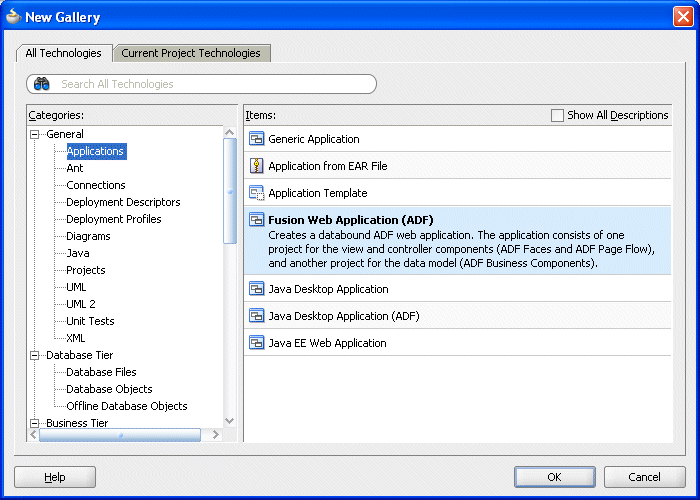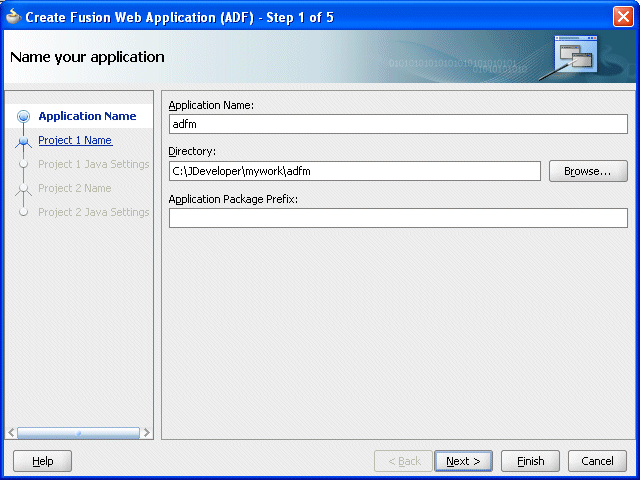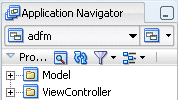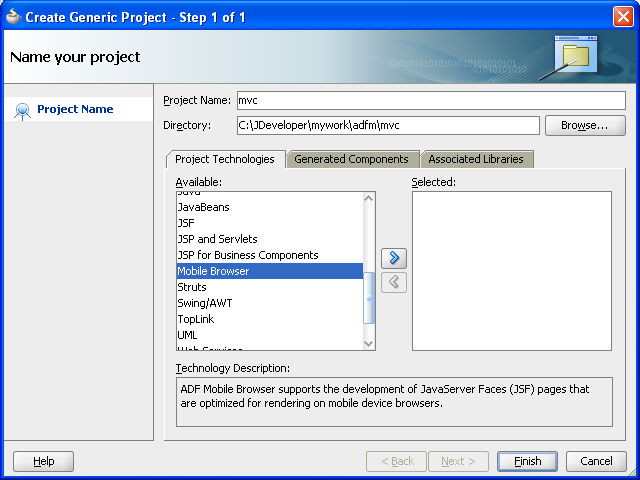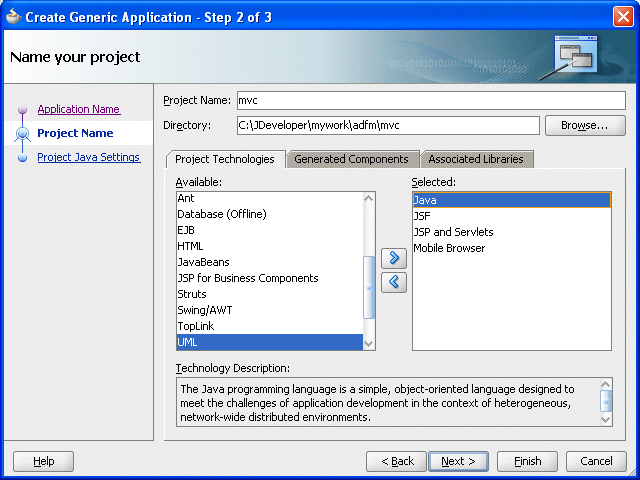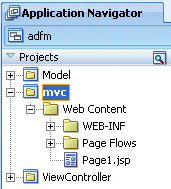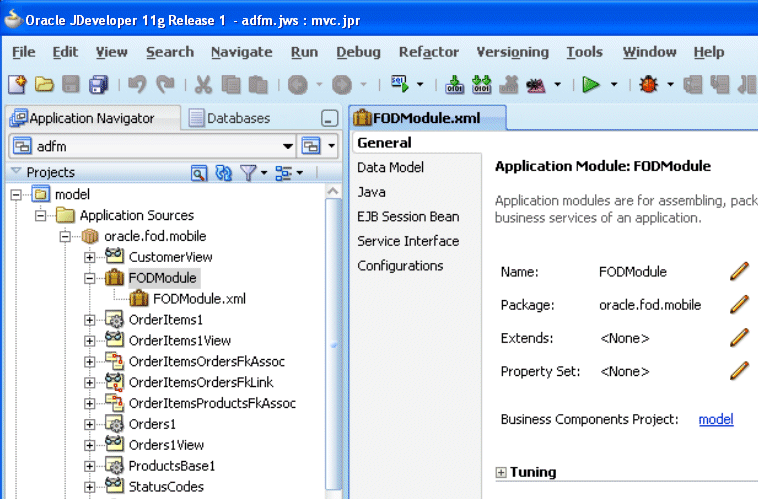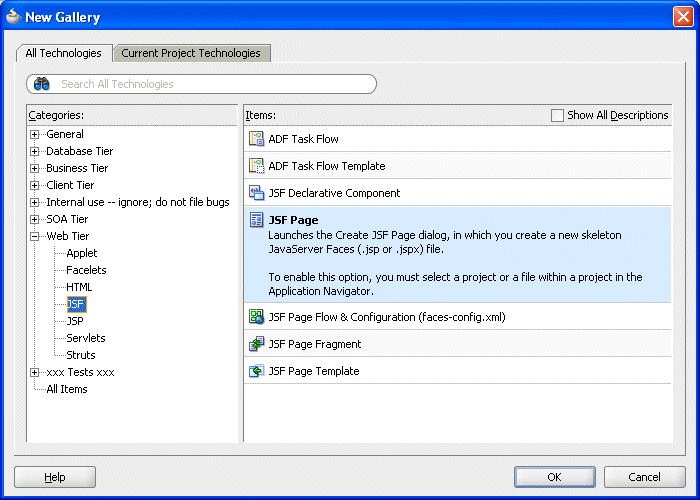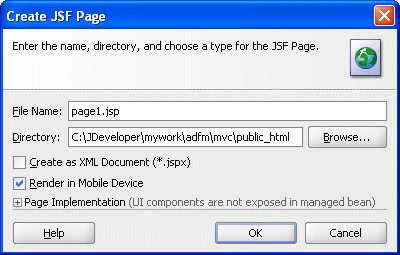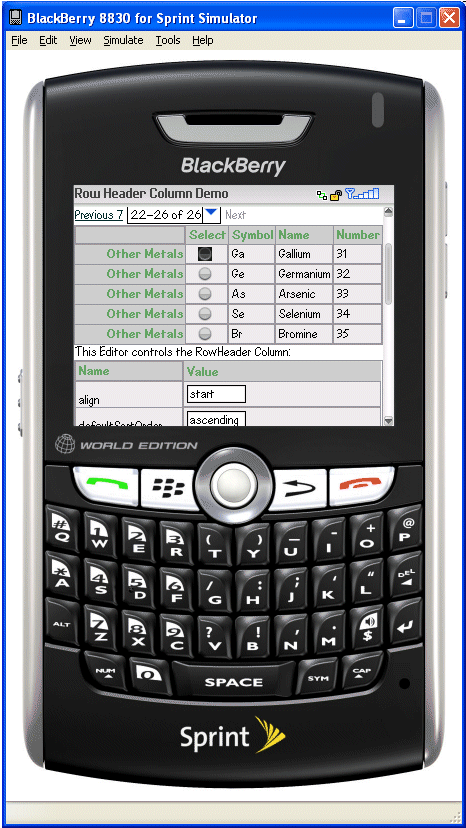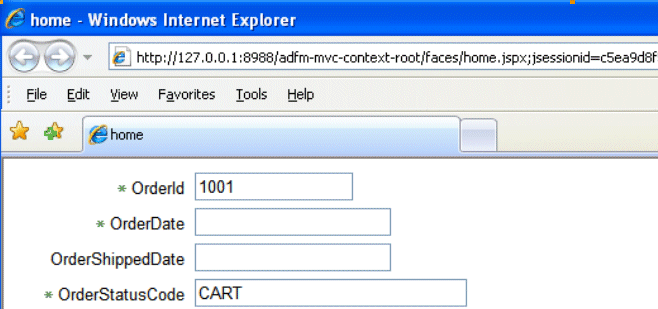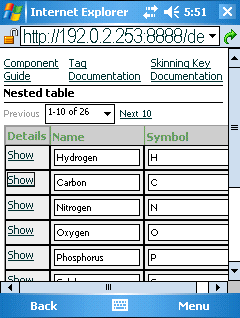2 Configuring the ADF Mobile Browser Environment
This chapter describes how to configure the environment for ADF Mobile browser applications and how to build and test mobile browser applications.
This chapter includes the following sections:
-
Section 2.1, "About the ADF Mobile Browser Development Environment"
-
Section 2.2, "Configuring the ADF Mobile Browser Development Environment"
2.1 About the ADF Mobile Browser Development Environment
ADF Mobile browser application development is almost identical to ADF Web application development, except that ADF Mobile browser application development uses only mobile JSF pages that consist of Apache MyFaces Trinidad components.
Note:
Oracle JDeveloper supports only the JSF page flows for ADF Mobile browser application development. The ADF task flow is not supported.To create an ADF Mobile browser application:
-
Configure the environment by creating an application and project.
-
Add a Web project.
-
Add the JSF pages using Apache MyFaces Trinidad components.
2.2 Configuring the ADF Mobile Browser Development Environment
ADF Mobile browser application development differs only from ADF Web application development for desktop browsers in the creation of the Web project. For more information, see Section 2.3, "Developing an ADF Mobile Browser Application."
2.2.1 How to Configure the Environment by Creating a Mobile Application and Project
To configure the environment, first create an ADF Mobile browser application that includes a project with the ADF Mobile browser technology.
To create the ADF Mobile Browser Application and the ADF Mobile Browser Project:
-
Choose File and then New.
-
In the New Gallery, expand General, select Applications and then Fusion Web Application (ADF) and then click OK.
-
In the Name your application page of the Create Fusion Web Application (ADF) wizard, enter a name and, if needed, a location for the application in the Directory field, as shown in Figure 2-2.
-
Click Finish.
Selecting Fusion Web Application (ADF) creates the model project used by the mobile view project. Figure 2-3 shows the application's Model and its generated Model-View-Controller projects that appear in the Application Navigator.
Note:
Define the business logic for the Model project, but do not use the generated Model-View-Controller project. Instead, create a mobile Model-View-Controller project as described in the following steps. -
Choose File and then New. The New Gallery appears.
-
In the New Gallery, expand Categories, select Projects and then select Generic Project and click OK.
-
In the Create Generic Project wizard, complete the wizard by first entering a name for the project. For example, enter mvc (a short name for Model-View-Controller mobile).
Tip:
To make entering a URL on a mobile device easier, enter short, lower-case names for both the application and the project. -
Select the ADF Mobile browser technology for the project by moving Mobile Browser from the Available list to the Selected list.
Figure 2-4 shows the Mobile Browser technology in the Available list. After you move the Mobile Browser technolgy to the Selected list, the following technologies are made available to the project and also appear in the Selected list, as shown in in Figure 2-5:
-
Java
-
JSF (JavaServer Faces)
-
JSP and Servlets
-
-
Click Next to navigate through the Configure Java settings page and then click Finish.
2.2.2 What Happens When You Create a Mobile Application and Project
As shown in Figure 2-6, the mobile Model-View-Controller project (mvc) appears in the Application Navigator within the Fusion Web application (adfm).
Because you added the mobile browser technology scope, the Apache MyFaces Trinidad library is automatically loaded to the workspace and the Trinidad component palette is loaded when you create mobile JSF pages, shown in Figure 2-10.
2.3 Developing an ADF Mobile Browser Application
ADF Mobile browser application development is nearly identical to ADF Web application development for desktop browsers; the two only differ in how you create the Web project. For mobile browser applications, you develop an application by creating Web pages within the Web project. Otherwise, you develop a mobile browser application the same way that you develop an ADF Web application for a desktop browser. Typically, you create a Web project within the application to implement a user interface and ADF Business Components or an Oracle TopLink project to implement a business layer.
Figure 2-7 shows a mobile application (adfm) that contains model, a business components project.
2.3.1 How to Develop an ADF Mobile Browser Application by Creating a Mobile JSF Page
You develop an ADF Mobile browser application by first creating a JSP page and then populating it with the Apache My Faces Trinidad components.
-
Choose File and then New. The New Gallery appears.
-
In the New Gallery, expand Categories, select Web Tier, and then select JSF and then select JSF Page and click OK.
Note:
Project Technologies (the default) must be selected from the Filter By list. -
Enter a name for the JSF page, and if needed a directory location for it in the JSF Page dialog, shown in Figure 2-9.
Note:
Because you added the Mobile Browser technology scope for the application, the Render in Mobile Device option is selected by default, as shown in Figure 2-9. -
Figure 2-10 shows the designer for a mobile JSP page called page1.jsp.
-
From the Components Palette, select the Trinidad components and then create the page using the Apache MyFaces Trinidad components. You can create the page in the same manner as a desktop ADF Web page.
2.3.2 What Happens When You Create a Mobile JSF Page
Because the Render in Mobile Device option is selected by default, the page designer in the visual editor reflects the size of a mobile device, as illustrated in Figure 2-10.
Tip:
You change the size of the page in the visual editor or by clicking Tools, then Preferences, then Mobile.2.4 Testing an ADF Mobile Browser Application
You can test an ADF Mobile browser application on a mobile device, a mobile device emulator, or a desktop browser. Testing on an actual mobile device or mobile device emulator provides more accurate results than does testing on a desktop browser.
Using a desktop browser to test an ADF Mobile browser application produces only approximate results. Desktop browsers provide a fairly uniform testing environment: Web pages appear and behave similarly and business logic executes identically in any type of browser.
Testing an application on an actual mobile device, however, produces more accurate results, because the capabilities of mobile browsers may cause controls to behave differently than they do on a desktop browser. In addition, mobile browsers are usually smaller than desktop browsers. They also render pages differently than desktop browsers because Web servers optimize the look and feel by generating pages that are specific to the mobile browser.
Testing ADF Mobile browser applications directly on mobile devices has limitations as well, in that you may not have access to all of the devices that you must test. Furthermore, firewalls can complicate testing. Many mobile devices can only access the Internet and therefore cannot reach development environments behind a firewall. In such cases, mobile device emulators provide an alternative testing method. For example, to test applications on BlackBerry or Windows Mobile emulators (Figure 2-11 and Figure 2-13, respectively), first download device emulators from the RIM developer site (http://na.blackberry.com) and the Microsoft developer site (http://www.microsoft.com). Before you test applications on the emulator, you must first configure the emulator and connect it to the Web server. The Oracle Technology Network (http://www.oracle.com/technology/tech/wireless) provides information on downloading and configuring simulators for ADF Mobile browser.
2.4.1 How to Test ADF Mobile Browser Applications on Emulators
After you test an application on a desktop browser, you can then test it on an emulator. You can use the URL displayed in the desktop browser, but if it uses the localhost IP address (127.0.0.1), you must change it to the network IP address of your computer.
Tip:
To obtain the network IP address, use theipconfig command interface on Windows systems and the ifconfig command on Linux/UNIX systems.For example, to test an application using a Windows Mobile 6 emulator, change the address from the desktop's localhost IP address (127.0.0.1, shown in Figure 2-12) to that of the computer's network IP address (192.0.2.253, shown in Figure 2-13).
In addition, you must remove the session specification that follows the page name. The page name is typically appended with either .jspx or .jsp. In Figure 2-12, the page name, home, is appended with .jspx.
In general, you debug an application by repeating cycles of code and then by testing the application. When you test an application that has been modified, you must do one or both of the following:
-
Refresh the page.
-
Clear the browser's cache.
Tip:
Because the URL does not change if you develop the same application, you are not required to enter it again.2.4.2 What You May Need to Know About Browser Settings
To view ADF Mobile browser applications properly requires adjustments to the browser settings for Windows Mobile and BlackBerry browsers.
Microsoft Windows Mobile 5 and 6, Microsoft Pocket Internet Explorer
For optimal viewing, select the Fit to Screen view (accessed by selecting Menu, View and then Fit to Screen).
Note:
Do not select the One Column view because it causes layout problems.ADF Mobile browser only works if JavaScript support is enabled. To ensure that JavaScript support is enabled:
-
Select Options and then Browser Configuration.
-
Ensure that the following tables are selected:
-
Support JavaScript
-
Allow JavaScript Popup
-
Support HTML Tables
-
